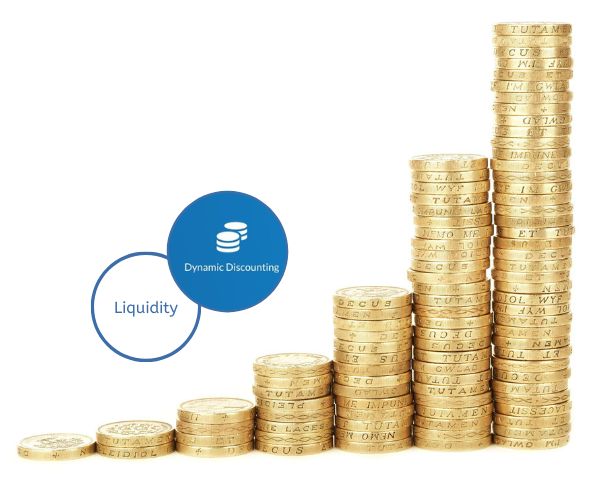
How financially flexible is your company? Did you know that you can improve your liquidity with dynamic discounting?
As an organisation, you measure your financial health by, among other things, your liquidity. How financially flexible are you? Are you able to meet your payment obligations for short-term debts? It remains a challenge to get a grip on your liquid assets. Especially when it comes to outstanding invoices with your customers. Various organizations therefore resort to factoring, a proven but static form of optimizing working capital. A less well-known but much more flexible and cheaper form of working capital optimization is Dynamic Discounting. In exchange for a dynamic discount on the invoice, the customer pays the invoice to the supplier earlier. The earlier the payment is made, the higher the discount.

Dynamic Discounting uses a digital platform on which all approved invoices are imported from the customer’s financial system. This is done automatically via an API, so no manual input is required. The suppliers are connected to the platform free of charge, they determine per invoice whether it must be paid earlier. If not, the contractually agreed payment term applies. If so, they select the desired payout day. The system then calculates – fully automatically – the discount for the customer on this supplier. As a supplier, do you not feel like manually determining per invoice when you want to get paid? Then you can easily turn on AutoPay. With this option, the customer pays all invoices the set number of days in advance.
For suppliers, there are various advantages associated with working with Dynamic Discounting. The three main benefits are: control over cash flow, visibility at the customer and optimizing working capital.
The first advantage ‘grip on cash flow’ is a multiple advantage. The supplier gains insight into the payment status of all invoices with its customer. This gives insight into the periods when payments are made, but also how much cash is in the account by which period. For example, have all invoices for the new financial year been paid? But also what is the cash flow like during the payment of the holiday pay? It is often difficult to control this, but by using Dynamic Discounting invoices can be accelerated, so that the money is in the account sooner.
The second advantage is ‘visibility with the customer’. Not only the supplier has a dashboard on the platform, of course the customer also has one. This allows the customer to easily see all invoices per supplier, but also which supplier regularly accelerates the invoices. And then get a discount. By having invoices paid earlier, the supplier is more prominent. What a shortlisted entry for a next assignment can bring. Or perhaps an extra assignment immediately. The supplier can also use this to actively recruit customers. If the customer pays earlier, they will receive a better price for the services or products provided.
The last, but perhaps the most extensive advantage of Dynamic Discounting is ‘working capital optimization’. In these times of expensive transport, shortages of resources and strongly fluctuating daily prices, it is important to order products on time. Keeping stock costs money, but with uncertainty about delivery and the fluctuating daily prices, stock often yields money in this day and age. But in order to build up stocks, capital is needed. By using Dynamic Discounting strategically, the supplier quickly has that capital. As a result, one can build up a stock for a good price. After all, producers often give a bulk discount for large orders. By keeping the stock up to date, the supplier is able to deliver on time. When delivering several products from stock, the transport costs are also lower. You do not need multiple transports.
What is the difference between Dynamic Discounting and factoring? As stated earlier and as the term also implies, Dynamic Discounting is dynamically applicable. The supplier determines which invoice they want to have paid earlier. If an invoice is not expedited, then no discount will be given.
With factoring, the supplier hands over all invoices from all customers. Based on the number of invoices and the related turnover, the factoring company receives a fixed percentage. It is not possible to keep invoices or customers out of this agreement. This provides working capital, but at what cost? Often at a much higher percentage than by using Dynamic Discounting.
What does it actually yield for the supplier to use Dynamic Discounting strategically? The money is received sooner, making the cash flow more transparent and in balance. But they do give away a discount on the invoice. The average amount that becomes available during the year can be calculated using the following formula.
Formula: delta (number of days in your money) / 365 x total turnover = average extra amount of liquidity available over the year. The delta number of days in this formula is the number of days that the invoices are accelerated and therefore paid earlier.
This amount, in combination with the aforementioned benefits, provides the supplier with better liquidity and a stronger position in the negotiating market. Both towards customers (better prices, faster delivery of stock) and towards producers (bulk orders).
Are you interested in applying Dynamic Discounting to your customers or suppliers in response to the above article? Then contact us now for additional information and an analysis of the financial benefits you can achieve.